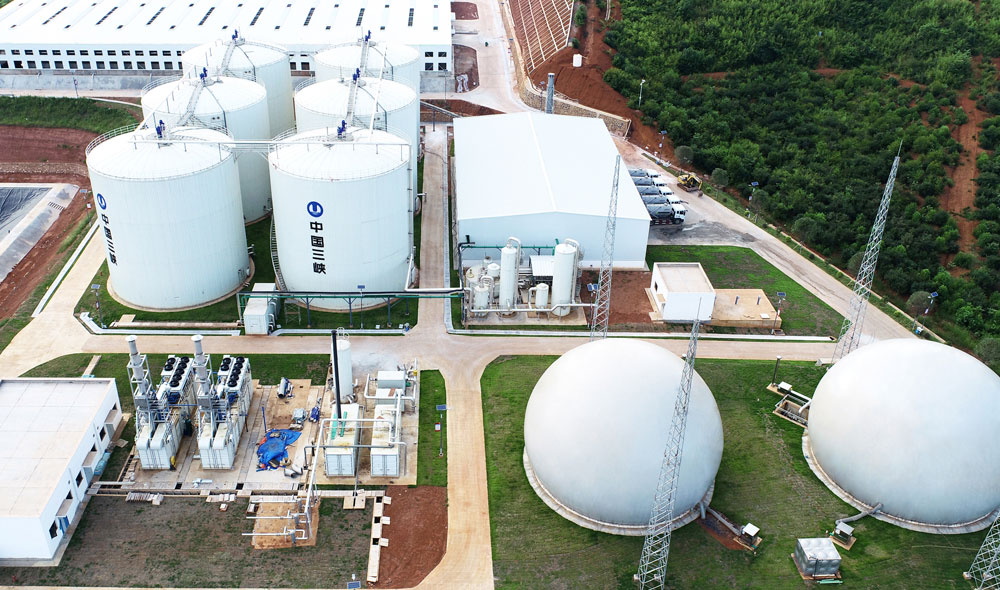Electricity Generation Biogas Plant

Produkto aprašymas
Anaerobic Digestion Electricity Generation Biogas Plant
Biogas serves as a versatile energy source, powering generators to produce electricity, which can then be sold to utility companies or utilized for on-site consumption within livestock farms. Additionally, surplus biogas can be shared with neighboring residents, fostering local energy independence and sustainability. This multi-faceted utilization of biogas underscores its potential as a decentralized energy solution, mitigating reliance on traditional power grids and reducing carbon emissions through biogas electricity production. By harnessing biogas for both commercial and community purposes, farms contribute to a more resilient and eco-conscious energy landscape, benefiting both themselves and the surrounding community with cleaner and renewable energy alternatives.
YHR Bio Gas Power Generation Projects
Leiyang Project
Over 370,000 tons of organic waste from urban and rural areas can be treated annually by the project, which will also generate over 26.64 million Kwh of clean, renewable electricity.
Xinyu Project
Large-scale farming in the region is relatively scattered, and it is difficult to treat and manage manure. Affected by the epidemic, the scale of farming fluctuates greatly, and it is difficult for go...
Zunhua Project
The primary raw materials for the project are corn straw, human dung, and chicken manure. There are two stages to the project. The 45,000 m³ of biogas is used to produce electricity and is purified into natural gas; the leftover biogas is used to make organic fertilizer, and the liquid biogas is used to irrigate agricultural land.
Dingnan Project
Large-scale farming in the region is relatively scattered, and it is difficult to treat and manage manure. Affected by the epidemic, the scale of farming fluctuates greatly, and it is difficult for go...
Yongcheng Project
In Yongcheng, Henan, YHR Environment built an electricity from bio gas power generation plant in 2017 using wheat straw and pig manure as raw materials. It is used for the production of biogas power, producing 20,000 m...
Harbin Project (40000m³/d, 80000m³/d)
With a total of 12 CSTR reactors constructed, the project is China Resources Group's Northeast base project. One dry yellow straw is used in the design as the fermentation raw material, and the total solids (TS) is more than 80%, with 50% coming from rice and corn straw.
Chifeng Project
The project generates 10,000 m³ of biogas per day using pig dung as its raw material. The project generates power from methane and uses RIR technology to address the issue of heat balance in anaerobic systems in cold climates.
Lianyungang Project
The annual waste disposal capacity of the project is not less than 500,000m³. The sewage of the dairy hall and the domestic sewage of the pasture are deeply treated and discharged after reaching the ...
How Does A Biogas Plant Transform Biogas Into Electricity?
A biogas energy project can achieve electricity generation using biogas through a process called cogeneration or combined heat and power (CHP). In this process, biogas, which is primarily methane generated from the anaerobic digestion of organic materials like agricultural waste, animal manure, or sewage, is used as fuel to power an engine or turbine.
The biogas is combusted within the engine or turbine, causing it to rotate. This rotational motion is then converted into electricity by a generator connected to the engine or turbine. The electricity generated can be used on-site to power electrical appliances, machinery, or lighting within the biogas plant made by biogas plant suppliers.

